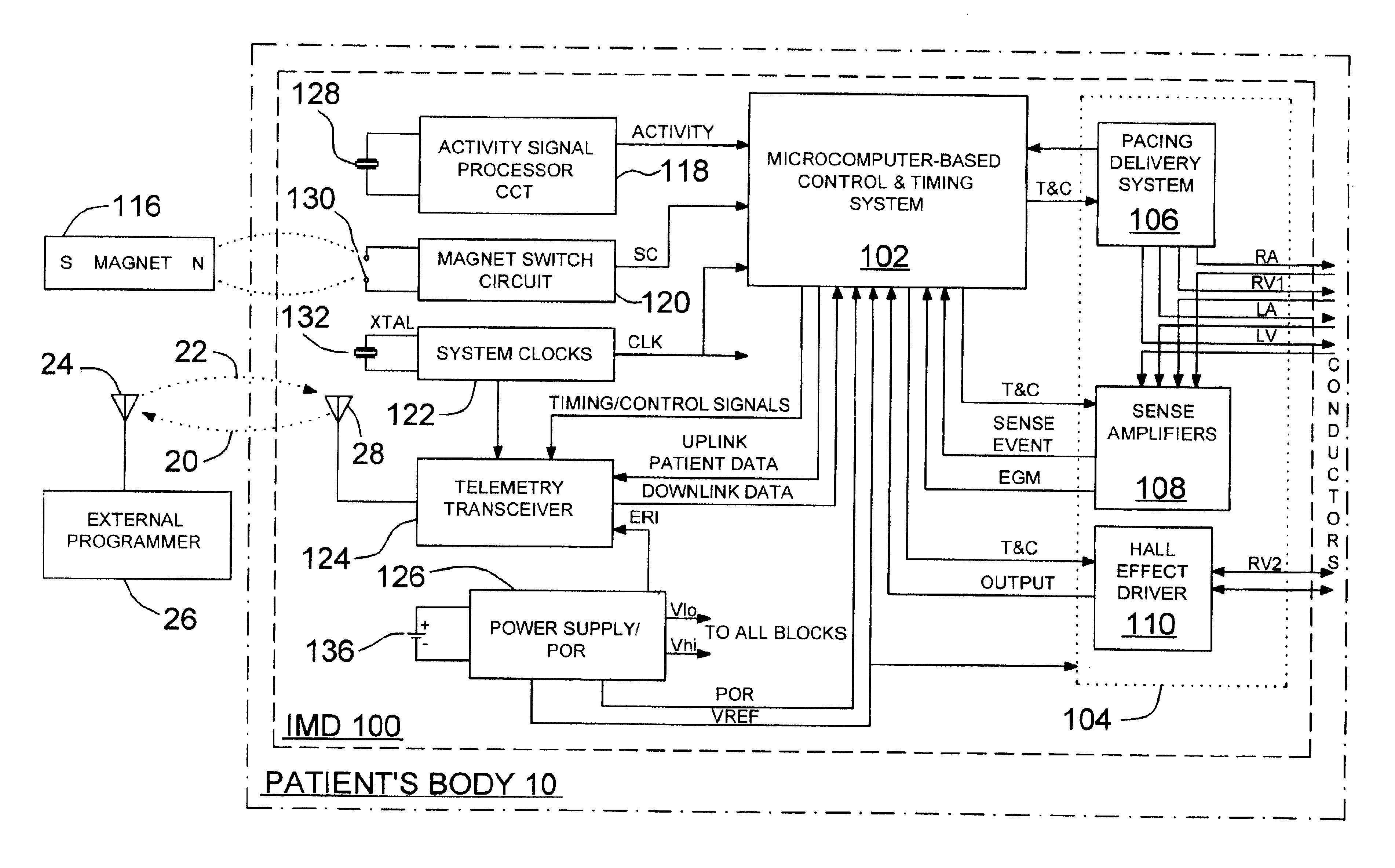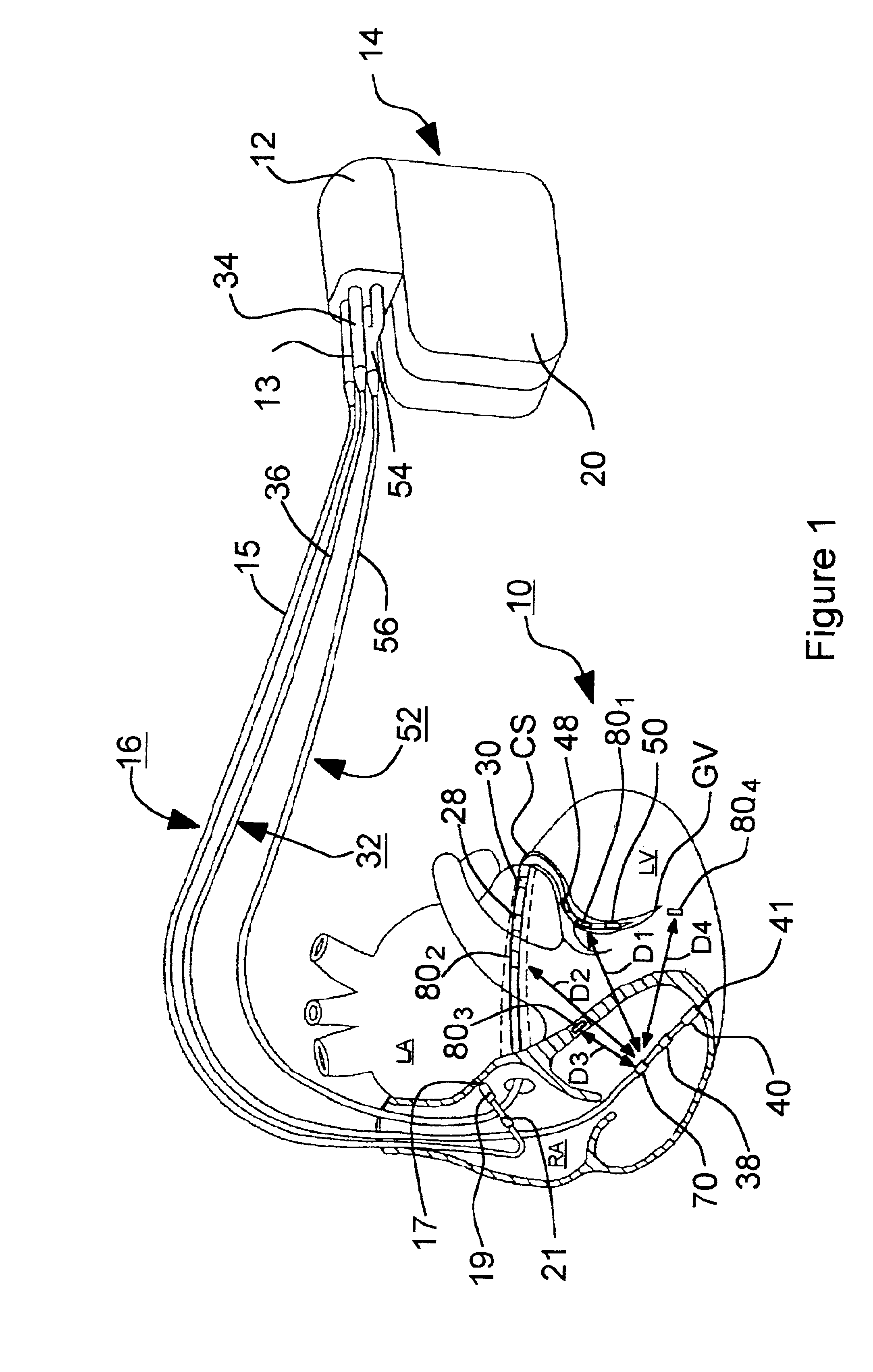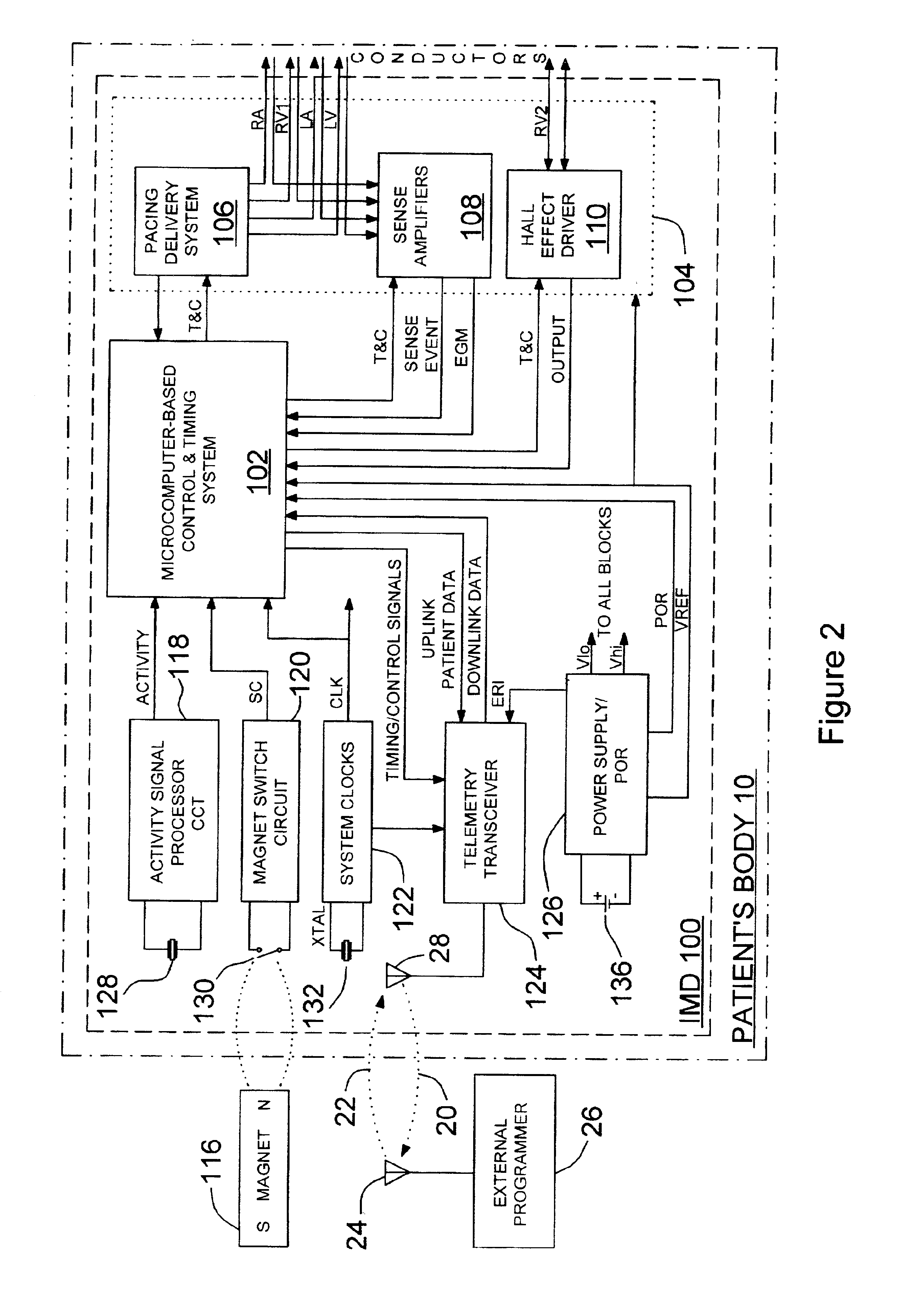Implantable medical device for measuring mechanical heart function
a medical device and mechanical heart technology, applied in the field of implantable medical devices, can solve the problems of insufficient cardiac output to sustain mild or moderate levels, inability to perform measurement procedures for even a resting patient, time-consuming measurement procedures, etc., and achieves the effects of not waste of pacing energy, prolonged battery life, and high strength
- Summary
- Abstract
- Description
- Claims
- Application Information
AI Technical Summary
Benefits of technology
Problems solved by technology
Method used
Image
Examples
Embodiment Construction
[0055]In the following detailed description, references are made to illustrative embodiments for carrying out the invention. It is understood that other embodiments may be utilized without departing from the scope of the invention. For example, the invention is disclosed in detail herein in the context of an AV sequential, three chamber or four chamber, pacing system operating in demand, atrial tracking, and triggered pacing modes for restoring synchrony in depolarizations and contraction of left and right ventricles in synchronization with atrial sensed and paced events for treating heart failure and / or bradycardia in those chambers. This embodiment of the invention is programmable to operate as a three or four chamber pacing system having an AV synchronous operating mode for restoring upper and lower heart chamber synchronization and right and left atrial and / or ventricular chamber depolarization synchrony. Or, simply bi-ventricular pacing may be applied to the right and left vent...
PUM
 Login to View More
Login to View More Abstract
Description
Claims
Application Information
 Login to View More
Login to View More - R&D
- Intellectual Property
- Life Sciences
- Materials
- Tech Scout
- Unparalleled Data Quality
- Higher Quality Content
- 60% Fewer Hallucinations
Browse by: Latest US Patents, China's latest patents, Technical Efficacy Thesaurus, Application Domain, Technology Topic, Popular Technical Reports.
© 2025 PatSnap. All rights reserved.Legal|Privacy policy|Modern Slavery Act Transparency Statement|Sitemap|About US| Contact US: help@patsnap.com



